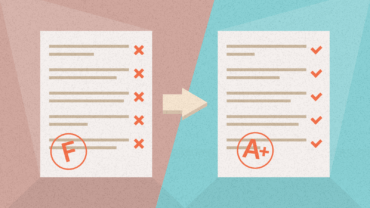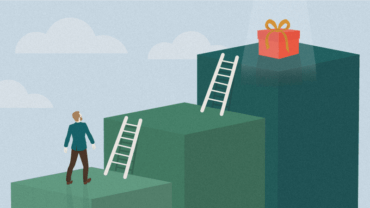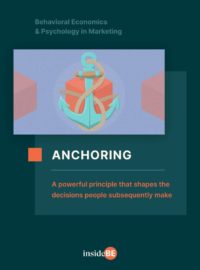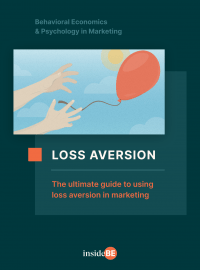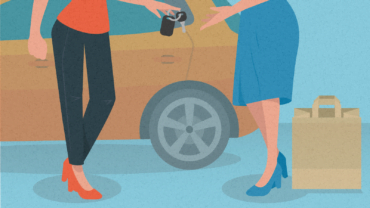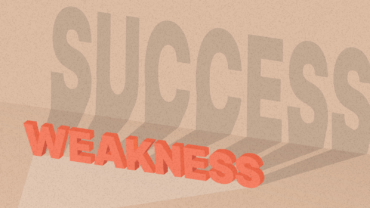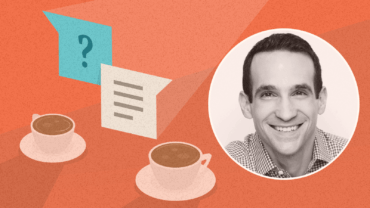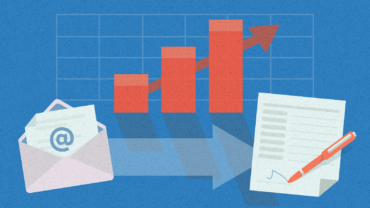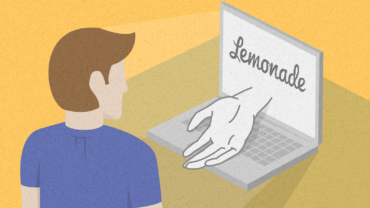Overconfidence Bias – Everything You Need to Know

Article content:
Definition of overconfidence bias
Overconfidence bias is our tendency to think we are better than we actually are. It makes us overestimate our skills, intelligence or knowledge.
This can have an impact on our decisions. It can make us believe that we have more control over a situation than we really do, that we will accomplish tasks faster than we really can, or that we perform our job better than our colleagues.
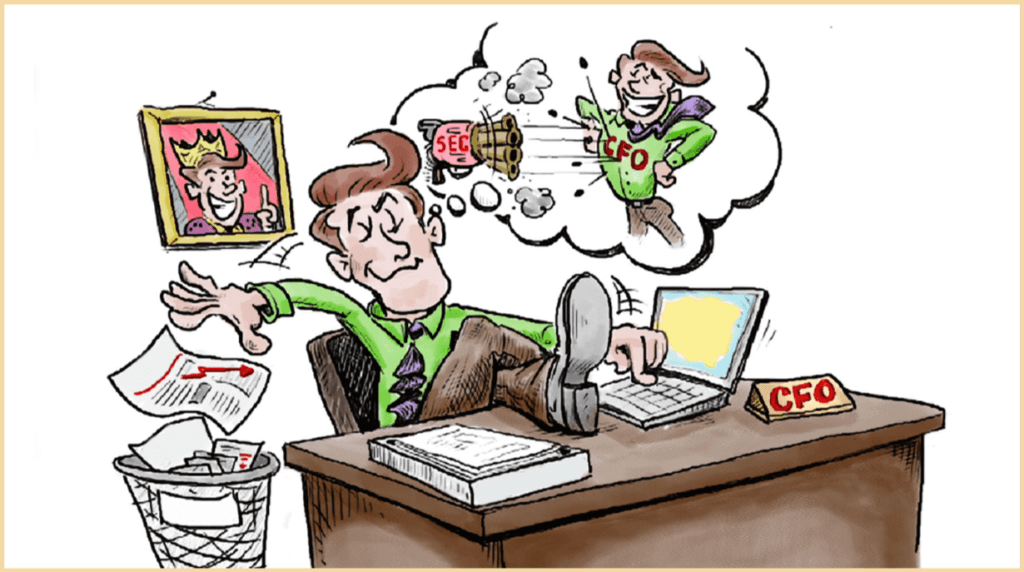
Source: Ethics Unwrapped
How does it work?
If you’ve ever tried to actively invest your money, you might already have been through this situation. Imagine trying it for the first time. You don’t really know how to wrap your head around it yet, so you turn to your friend or a financial advisor.
She shows you around, asks you a few questions, and together you choose the best option for you at that moment.
A week or two passes and what do you see? Your investments are doing quite well! So you ask your friend again so that you can invest even more, and guess what? Ka-ching, your money keeps growing!

Discover ground-breaking ideas and fascinating solutions.
That’s when the overconfidence kicks in. At that point, you might think: “Look at that, I’m doing pretty well. And it wasn’t that hard. I bet I can pull this off all by myself”. Except you can’t. You overestimate how much you know and how much you are in control. That’s exactly how you end up losing even the money you earned in the first place.
Why does this happen?
There are several explanations for why we get so cocky even in situations that really matter. Some of them are more general, while others go deeper. Let’s go through a few of them.
Society values confidence
First, let’s point the finger at others for our misjudgments. The fact is that western culture highly values confident people. Here is how Daniel Kahneman, the grandfather of behavioral economics, addressed clinicians’ overconfidence in his best-seller Thinking, Fast and Slow:
“Generally, it is considered a weakness and a sign of vulnerability for clinicians to appear unsure. Confidence is valued over uncertainty and there is a prevailing censure against disclosing uncertainty to patients.
Generally, it is considered a weakness and a sign of vulnerability for clinicians to appear unsure. Confidence is valued over uncertainty and there is a prevailing censure against disclosing uncertainty to patients.
An unbiased appreciation of uncertainty is a cornerstone of rationality — but that is now what people and organizations want. Extreme uncertainty is paralyzing under dangerous circumstances, and the admission that one is merely guessing is especially unacceptable when the stakes are high. Acting on pretended knowledge is often the preferred solution.”
You can generalize this to a much broader population than just clinicians. Confidence gives us a certain appearance which society values and in turn encourages us to emulate.
The Assess-Search-Construct (ASC) model
Let’s get all nerdy and scientific for a minute. Winston Sieck and his colleagues took a closer look at the mechanisms behind the bias and came up with the Assess-Search-Construct model.
As the name already suggests, the model identifies 3 points in the process that produces overconfidence:
1. Assessing options
In this part of the process, we look at the possible options and judge them based on how familiar they seem to us. That means that if we have had experience with any of these options before (e.g. we already tried investing and it worked pretty well) we will probably choose this option.
2. Searching memory
In this step, we actively try to remember when this choice worked for us. These memories will later be used as evidence. Evidence of what, you ask?
3. Constructing an explanation about why the option is a good one
Evidence that we are correct. We use the prior cases that we recalled to confirm our belief that we are making a good decision. This is also called confirmation bias.
Voilà! Just like that you believe in yourself a bit more than you should.
Overconfidence bias experiments
Systematic overconfidence in word reproduction
In a classic study by Pauline Austin Adams and her colleagues, the authors asked people to read and remember a list of hard-to-spell words. Then, participants were presented multiple times with four words and were asked to pick the one that was on the list. After every response, they had to state how confident they were in their choice.
The confidence was systematically off by 20% on average.
In theory, if our confidence is absolutely accurate, that would mean that 100% confidence would equal 100% correct answers. What the researchers found, however, was that the confidence was systematically off by 20% on average.
This means that when subjects stated 100% confidence, on average they were accurate only 80% of the time.
More information increases overconfidence
Another study comes from Stuart Oskamp, who studied overconfidence bias in psychologists and psychology students.
Their confidence increased from 33% to 53%. However, their accuracy did not actually improve at all and stayed at around 30%.
He asked them to read a case study and answer a multiple-choice task in which they decided upon a diagnosis and stated their confidence about the answer. Subjects were then given more information about the case study so they could make a better judgment.
And they really did think their judgment was better, as their confidence increased from 33% to 53%. However, their accuracy did not actually improve at all and stayed at around 30%.
History of overconfidence bias
Overconfidence bias is considered to be one of many systematic errors in probability judgment. In other words, we tend to assess probabilities very badly, but the interesting part is that we all make the same mistakes over and over again.
Way back in the early 1900s, economists believed people were fully rational beings who were able to evaluate all the information available and make sound decisions. However, when psychologists looked at the data from their experiments, they noticed interesting patterns.
Actually, it all started in 1960 with the experiments by Adams and her colleagues that we described above. This was the first time that overconfidence was spotted as a systematic bias. However, it was not until 12 years later that probability judgment research really took off.
That’s when Kahneman and Tversky published their paper about representativeness heuristics. They claimed that people do not estimate the probabilities of certain events rationally. Rather, they make assumptions through stereotyping. Imagine a quiet girl with glasses and no makeup. Is she more likely to be a librarian or a barmaid? She fits our mental model of a librarian, so she probably is one.
Kahneman and Tversky helped open up a whole can of worms. In the following decades, researchers found dozens of similar heuristics, such as anchoring bias, status quo bias, and hyperbolic discounting.
How can you avoid it?
Be open to feedback
When overconfidence kicks in, it’s pretty hard to find flaws in our ideas. But guess what’s easy? Finding flaws in other people’s ideas. That’s why, when facing an important decision, you should gather everyone who is involved and knowledgeable about the decision at hand.
For instance, when you face a “big” investment opportunity (we’re looking at you, cryptocurrencies), share it with someone who you know is experienced in investing – a friend or a financial advisor. Before sending a budget proposal to a big prospective client, ask a senior colleague to take a look at it.
They may provide you with feedback that you would never have thought of yourself and suddenly, your idea might not look that great. And that’s actually a good thing! You can implement the suggestions and make a much better decision instead.
Consider what you may lose
One of the simplest things you can do comes from Daniel Kahneman himself. In his Thinking, Fast and Slow, he proposes that you imagine a scenario if the decision went wrong. What would the consequences be? In a month? A year? Five years? How could it hurt you, and what might you lose?
This technique utilizes powerful principles called loss aversion and risk aversion. Simply put,
we feel the pain from losses about twice as much as we feel the joy of equivalent gains. That’s why we avoid risky situations – because they might lead to losses. Especially when it comes to money.
A clear image of what you could lose if you go through with your decision might therefore help you to slow down a bit and think it through.
Examples of overconfidence bias
Americans are overconfident about their intelligence
An interesting study comes from Patrick R. Heck and his colleagues. They asked two independent samples of altogether 2,821 Americans whether they agreed with the statement, “I am more intelligent than the average person.”
By this point, you won’t be surprised to hear that the majority of people think a bit too highly of themselves. Results showed that 65% of Americans agreed with the statement.
However, Americans can keep their cool as the authors stated that “a tendency to overrate one’s cognitive abilities may be a stable feature of human psychology.”
Overconfidence led GGP Inc. to bankruptcy
GGP Inc. was one of the biggest real estate companies in America. In its prime, the company owned more than 200 malls and its stock was trading favorably.
Unfortunately for them, the financial crisis happened, and its shares rapidly declined. In 2008, this decline led the company into debt. As a result of the market collapse, GGP Inc. was unable to refinance the debt.
They still had a chance to sell equity, but due to their overconfidence bias, they didn’t. Eventually, they lost the chance to sell the shares profitably and this led to the largest real estate bankruptcy in U.S. history.
Men are more confident than women in their driving skills
MOL Limo is the leading car-sharing company in Hungary. When they found out that around 65-75% of its users were men, they decided to try to reduce this gender disparity. They approached Hungary-based behavioral consultancy BeHive.
What BeHive found was that women were ideal prospective customers, but … there were barriers preventing them from acting on this.
For example, BeHive found out that men are simply overconfident in their driving skills, meaning they worry way less about possible troubles with car sharing. Women overestimated the possibility of smaller car accidents, such as scratches, and suspected that insurance costs would be much higher than they actually were.
As a consequence, their lower confidence in comparison with men led women to avoid certain destinations, routes, or modes of transport, or even to avoid car sharing altogether. Men, on the other hand? They had no problems with these things at all.
To encourage women to use Limo, BeHive suggested “Limo days” where customers could try out the service with a dedicated person to walk them through the whole process.
They also recommended communicating the probability of a minor accident such as scratching a car as extremely low. On top of that, they proposed introducing slightly more expensive packages that would cover insurance in case of a scratch or accidental damage.
How can you use it in business?
Avoid overconfidence in negotiations
Expressing a healthy amount of confidence is usually a welcome tactic. It makes you seem competent. And let’s be honest, knowing what you’re doing is appreciated, whether you’re in a business meeting or a job interview. However…
Overconfidence might not be the best idea. In their article The Persuasion Knowledge Model: How People Cope with Persuasion Attempts, marketing professors Marian Freistad and Peter Wright stated that excessive confidence may be perceived as a red flag by your opponents and activate their defense mechanisms.
In fact, a tactic that might serve you well during negotiation is also admitting your weaknesses. It makes you seem more credible, trustworthy, sincere and modest. And it seems that honesty is valued much more than a blind belief in one’s abilities.
Watch out for customers’ overconfidence when designing a product
There are two scenarios when customers’ overconfidence may kick in and cause you trouble:
1. Before using the product
Let’s say you designed a great app for taking care of your clients’ finances. It analyzes their income and expenses, computes how much they can spend for certain categories and still, for example, be able to save enough to buy a new car in a few years.
Before launching such a product, make sure your target audience isn’t suffering from overconfidence. They might think “Pffff, I can do this myself by just using an Excel spreadsheet”.
In cases like these, you need to put more emphasis and be very specific about the value you can provide them. Show them why people are usually wrong in that assumption and how your product can save them from many struggles.
In the example of the personal finance app, you could show the customers that with just a few clicks they can save hours they would spend working on Excel and they can make much more precise analyses, as the app considers a wider range of factors.
2. After using the product
Now that you have persuaded your customers that your product makes their lives easier, they’re finally ready to try it. But you haven’t won yet.
After people use your product/service a couple of times they can get a false feeling they can do it themselves and that they don’t need you anymore. Investing? They could do that. Saving money? It doesn’t look that hard, and after all, they’ve already set up a standing order to a savings account.
It’s entirely possible that your clients may eventually learn the skills you provide them with, or at least feel like they have. You need to take this into account and pitch them more features at the right time to keep them using your app.
Another strategy is to build a habit of using the product. There are several ways and models of how you can achieve this. Perhaps the most common is the Hook model. It suggests using a trigger to begin using the product, rewarding the customers for using the product, and making them invest in it. Ultimately, this makes the product more valuable to the user.
Summary
What is overconfidence bias?
It is a cognitive bias that makes us think we are better than others – smarter, more intelligent, or more skilled.
As a result, we overestimate how much control we have over a situation, how fast we will accomplish tasks, or how well we perform compared to our colleagues.
Why does it happen?
According to the Assess-Search-Construct model, there are three stages of overconfidence bias. First, we assess the choices we have based on how familiar they seem to us. Then we actively try to remember when a choice worked for us and use this as evidence to confirm our choice.
How can you avoid it?
To avoid overconfidence bias, you should always be open to feedback, especially from educated and well-informed people. They may find flaws in your ideas that you would never think of.
What also helps is to imagine what you might lose if things go wrong. A clear image of what you could lose might help you to slow down a bit and consider other options as well.
How can you use it in business?
One of the places overconfidence can hurt you is in a negotiation of any kind. Overconfidence raises a red flag in your opponents’ minds and activates their defense mechanisms.
On the other hand, admitting your weaknesses might be a better idea. It makes you seem more credible, trustworthy, sincere, and modest.
Another area is product design. Customers might be overconfident about their skills and think they don’t need your product at all. In cases like these, you need to be explicit about the value your product brings and how it can make your customers’ lives easier.

